Nature on the frontier. How marshes are helping to defend Ukraine's borders
The state border cuts the Olmany marshes into two parts. The larger one belongs to Belarus and the smaller one to Ukraine. You won't find the name of these marshes on any list of "wonders of Ukraine", and there are people in our country who haven't even heard of their existence.
This is partly because the "marshes brand" is clearly inferior in terms of attractiveness to any other "natural brand". Yet the Olmany marshes are one of the largest marsh complexes in Europe that have been preserved in an almost untouched condition. This is definitely good news.
After all, peat deposits store carbon, which the marsh has been absorbing from the atmosphere for thousands of years to curb the greenhouse effect. Not to mention that any marsh is home to many species of plants and animals that cannot live anywhere else. And recently, Ukrainians have had cause to remember another well-known but forgotten role of marshes - their military role.
After all, they are an almost insuperable obstacle for military equipment and thus are able to protect our state borders just as well as specially designed fortifications. Ukrainska Pravda explains the value of the Olmany marshes, how they are being protected, and why they - and therefore all Ukrainians - are still in danger.
A nature reserve on the border
The Rivne Nature Reserve is one of two dozen nature reserves in Ukraine. Like the Polissia and Chornobyl Biosphere Reserves, it is located on the border with Belarus.
The Rivne Reserve consists of four separate parts. One of them is the Perebrody marshland, which stretches for 20 kilometres along the Ukrainian-Belarusian border. Mykhailo Franchuk, the reserve's deputy director for scientific work, says that a few years ago, the only way to recognise the state border was by the trail that border guards used to walk along.
This territory was almost untouched by humans. Apart from border guards and reserve staff, only residents of local villages visit the marshes to gather mushrooms and berries. There are no paved roads here either.
And all of this, of course, is very beneficial for nature.
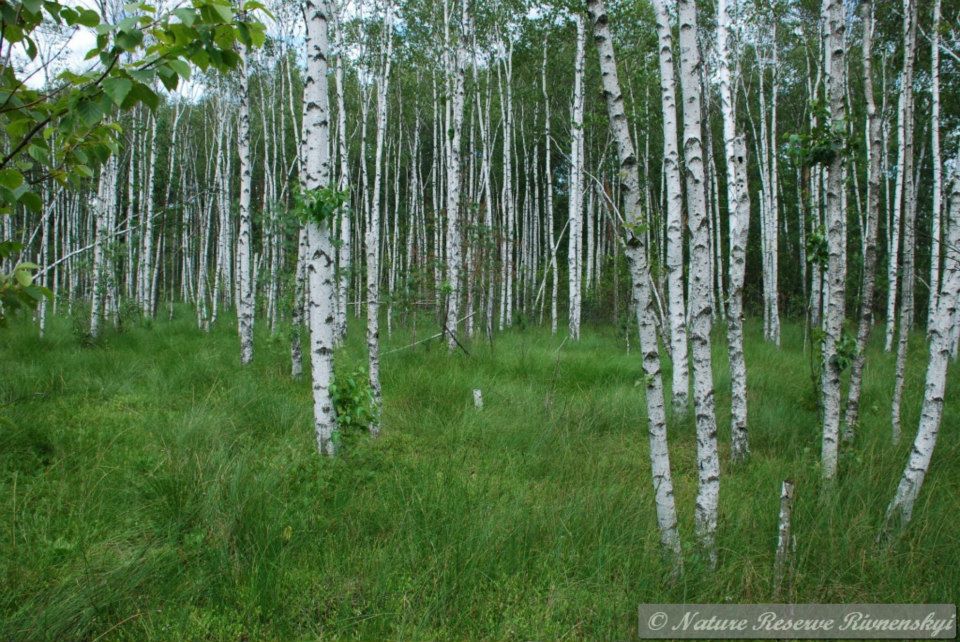 A wetland birch forest in the Rivne Nature ReservePHOTO FROM THE FACEBOOK PAGE OF THE RIVNE NATURE RESERVE
A wetland birch forest in the Rivne Nature ReservePHOTO FROM THE FACEBOOK PAGE OF THE RIVNE NATURE RESERVE
International marshes
On the other side of the border, Belarus also boasts an environmental conservation area, the vast Almany Mires Reserve. Despite the different names and different countries, all of this - both the Belarusian reserve and our reserve - makes up a single natural ecosystem called the Olmany marshes. According to the Ramsar Convention on Wetlands of International Importance Especially as Waterfowl Habitat, it is a wetland of international importance.
The area is important not only in terms of preserving biodiversity, that is, all the plants and animals that live there, but also in the fight against climate catastrophe. Peat is formed at a rate of about one millimetre per year and accumulates atmospheric carbon, which is responsible for the greenhouse effect. But if a marsh is drained, all this carbon will very quickly return to the atmosphere and increase warming.
Ever-spreading roads
Mykhailo Franchuk says that in recent years, border guards have marked the state border that cuts through the marsh ecosystem on the Ukrainian side.
However, as far as he knows, there are no plans to build any fortifications like those being constructed on other parts of the border with Belarus and Russia. This is good for nature. But, unfortunately, there are causes for concern.
Since 2015, a whole network of roads has appeared in the Belarusian part of the Olmany marshes, which is many times larger than the Ukrainian part.
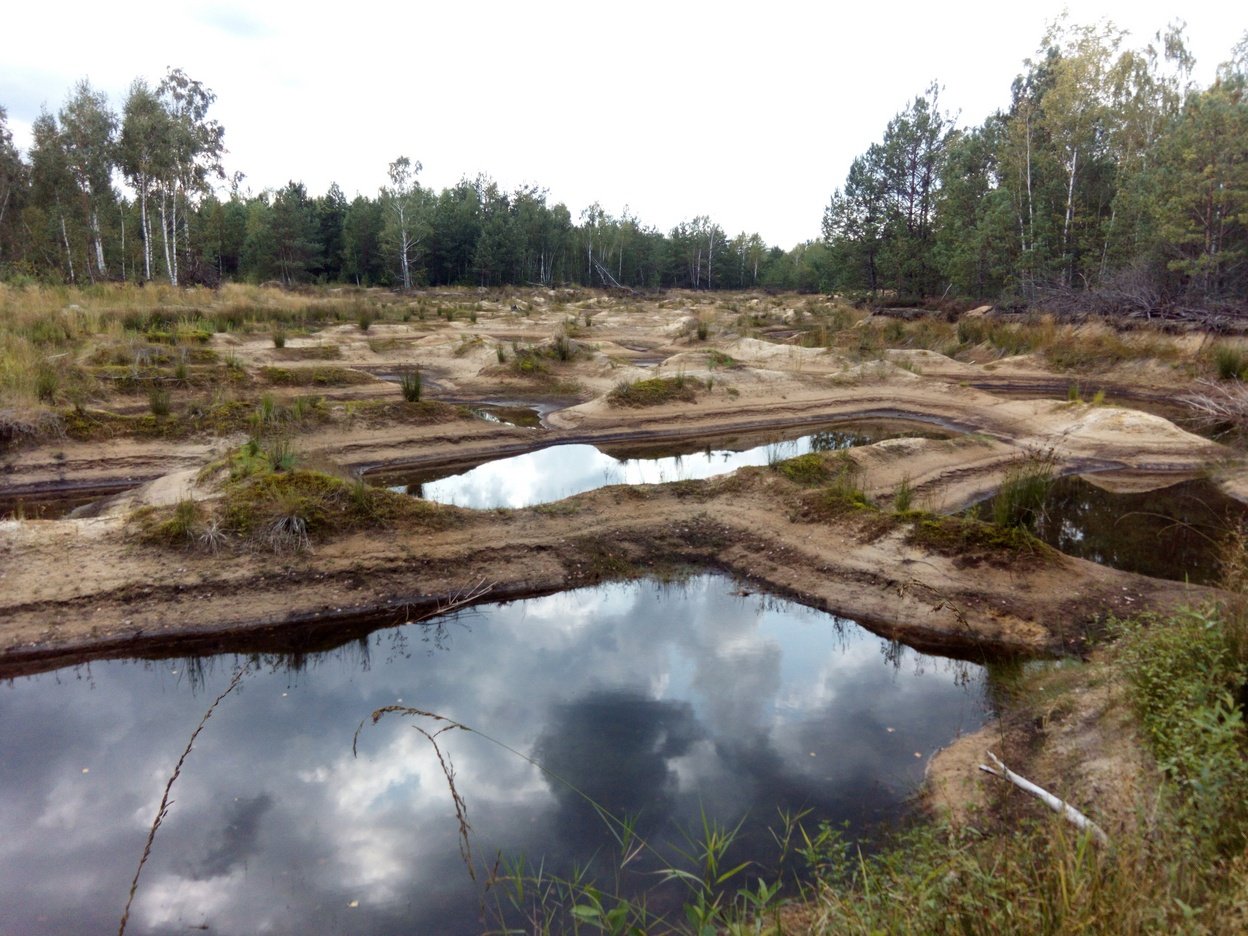 Sand mining in the Belarusian part of the Olmany marshes, together with road construction, is destroying the unique marsh ecosystemPHOTO: WILDLIFE.BY
Sand mining in the Belarusian part of the Olmany marshes, together with road construction, is destroying the unique marsh ecosystemPHOTO: WILDLIFE.BY
There were dirt roads there before. However, they follow features of the terrain, since there are dunes left by a glacier or other dry islands in the middle of the marsh. The dirt roads used by foresters or scientists for their field research did not harm nature to any great extent.
On the other side of the border, however, gravel roads designed for heavy vehicles have been built on the Olmany marshes. They are supposedly necessary so that natural fires in inaccessible places can be put out faster. The roads themselves harm the marsh as they disrupt the hydrological regime.
They simply block the marsh and do not allow water to move as it should in an undisturbed ecosystem. The roads are built on mounds of sand extracted from quarries right in the protected area. Furthermore, Belarusian environmentalists have discovered that at least some of the quarries are illegal, and some go beyond the permitted coordinates.
It doesn't matter that this is all happening on Belarusian territory. Like any natural ecosystem, the Olmany marshes do not adhere to state borders. Therefore, sooner or later, problems on the other side will creep into the Ukrainian part of the marsh.
What could endanger Polissia's natural environment?
There is no particular point in building any fortifications in the marsh from the point of view of protecting the state border.
On the contrary, it could harm the marsh and make the border more "transparent" to enemies. At the same time, fences or walls don't endanger the marsh as much as ditches do. "Polissia is very vulnerable to changes in the hydrological regime," says Mykhailo Franchuk, adding, "If you remember, there was a project called E40, before the full-scale invasion, when Ukrainians and Belarusians wanted to deepen the Prypiat [River] so that ships could sail there.
If they had lowered the [water] level by a metre, the whole of Polissia would have dried out, as there are tiny elevation differences in Polissia. And if you dig a canal somewhere on the border or anywhere else, the entirety of the water will flow into it."
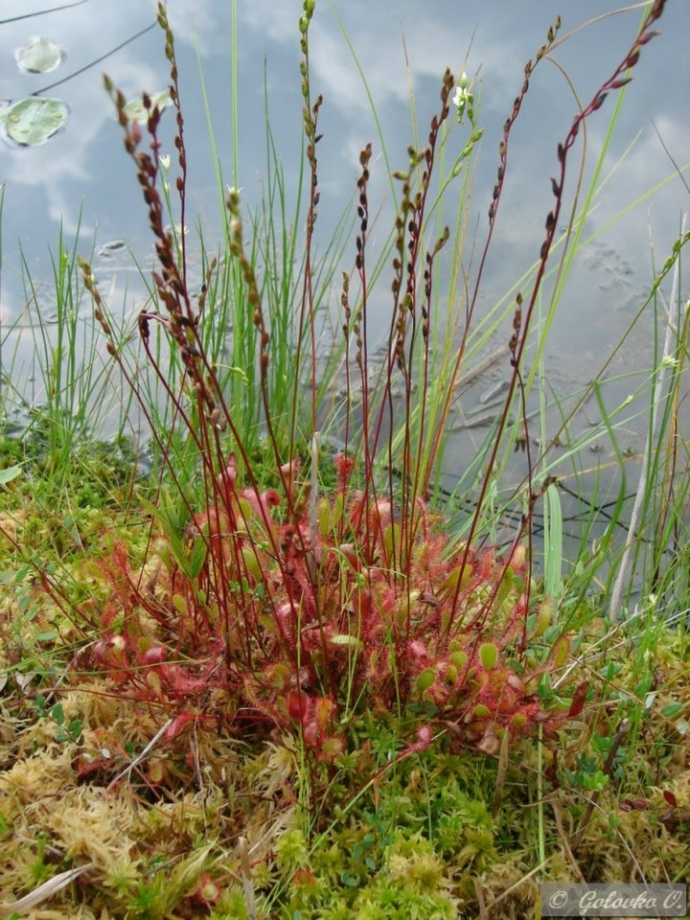 English sundew is an insectivorous plant listed in the Red Book of Ukraine [an official national red list of endangered animals, plants and fungi protected by the law in Ukraine - ed]. Its conservation depends entirely on preserving marshes, the only environment where it can live.PHOTO FROM THE FACEBOOK PAGE OF THE RIVNE NATURE RESERVE
English sundew is an insectivorous plant listed in the Red Book of Ukraine [an official national red list of endangered animals, plants and fungi protected by the law in Ukraine - ed]. Its conservation depends entirely on preserving marshes, the only environment where it can live.PHOTO FROM THE FACEBOOK PAGE OF THE RIVNE NATURE RESERVE
If this happens, the reserve will lose the Greater Spotted Eagle, a rare bird species listed in the Red Book of Ukraine and the Red List of the International Union for Conservation of Nature.
Two species of insectivorous sundews, several species of orchids, as well as Lapland and blueberry willows, relict plants that have survived the last Ice Age, will also disappear. At the same time, the damp marsh, which is not very susceptible to fire, will turn into a dry forest that might easily catch fire from a cigarette butt in the summer. Not to mention that there may be those who could intentionally set fire to the border forest.
Amber
There are other ways in which the marsh might be destroyed - for example, by mining sand on its territory, as is being done in Belarus, or mining amber, as may happen very soon in the Rivne Nature Reserve.
Ukraine's State Geology and Subsoil Service recently decided to auction off a site called Yelne-1 for amber mining. It is located in the Sarny district of Rivne Oblast, a few kilometres from the village of Yelne. On the other side is Syra Pohonia, one of four sites in the Rivne Reserve.
Yelne-1 and Syra Pohonia are separated by just a few hundred metres. However, even though the boundaries of the nature reserve have not been violated, the reserve's natural environment may be irrevocably damaged.
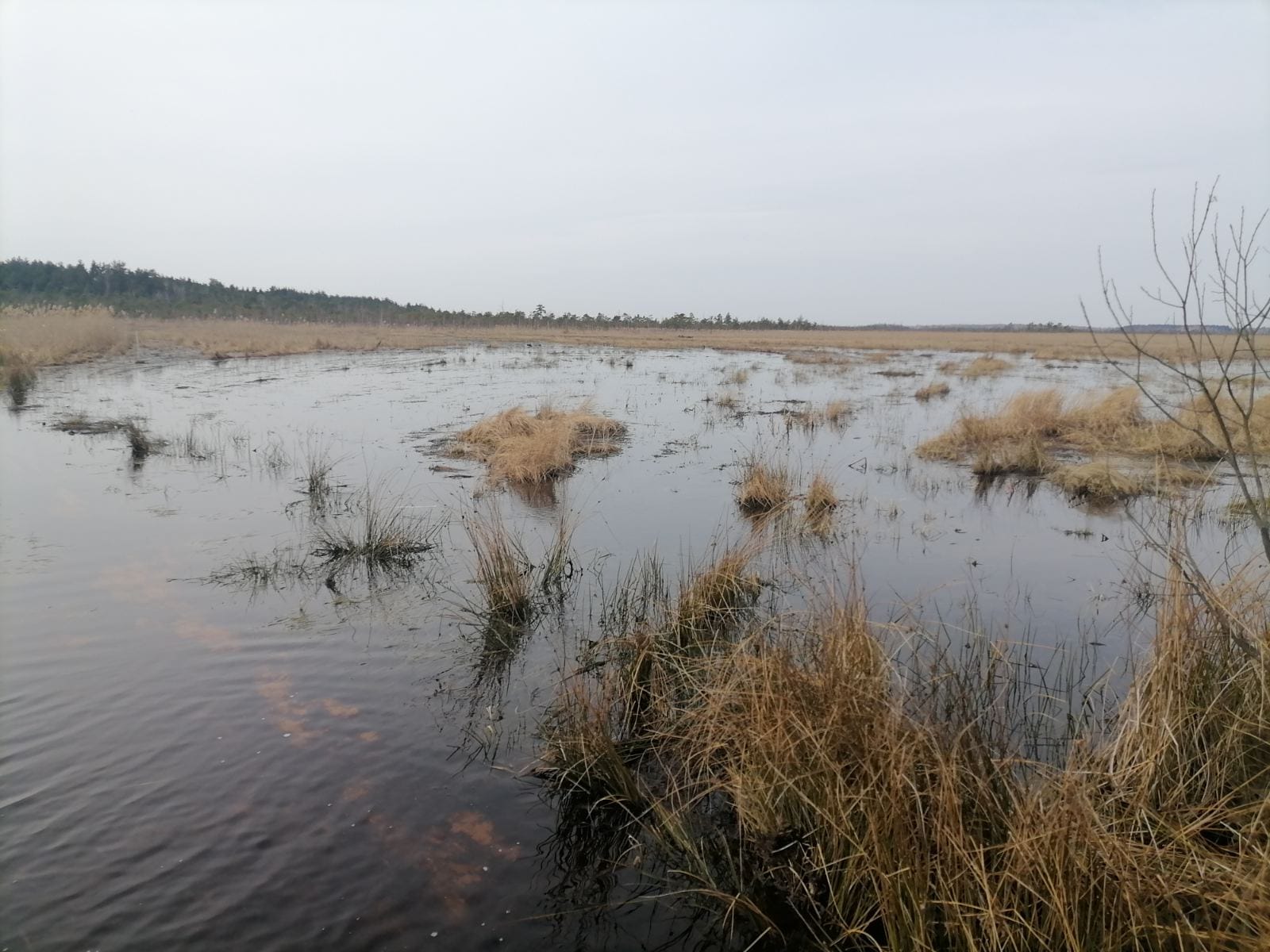 The Syra Pohonia marsh in spring. Amber mining may soon destroy the ecosystem, home to rare species of plants and animals.
The Syra Pohonia marsh in spring. Amber mining may soon destroy the ecosystem, home to rare species of plants and animals.
And the carbon that has been accumulating in peat deposits for thousands of years will return to the atmosphere and increase the greenhouse effect.PHOTO: MYKHAILO FRANCHUK
The official boundaries of nature conservation areas do not always correspond to the natural boundaries of ecosystems. This is the case with Syra Pohonia: more than half of the marsh area was part of the reserve, and the rest, less than half, looked as if it had been "cut off" with scissors. Mykhailo Franchuk says that for several years, the reserve has been working to increase its territory by approximately 10,000 hectares, that is, by almost a quarter - in particular, due to the marsh area that had been "cut off" from Syra Pohonia.
The international response
The management of the Rivne Reserve is not the only organisation concerned about preserving the Polissia marshes.
This February, Professor Hans Joosten wrote to Ukraine's Minister of Environmental Protection, Ruslan Strilets. Professor Joosten works at the Institute for Botany and Landscape Ecology in Greifswald, Germany, and represents the International Mire Conservation Group (IMCG), a network of specialists from 70 countries working to preserve peatlands. In his letter, Professor Joosten states that the development of the Yelne-1 field "will have a strong irreversible negative impact on the unique and very important Syra Pohonia peat bog".
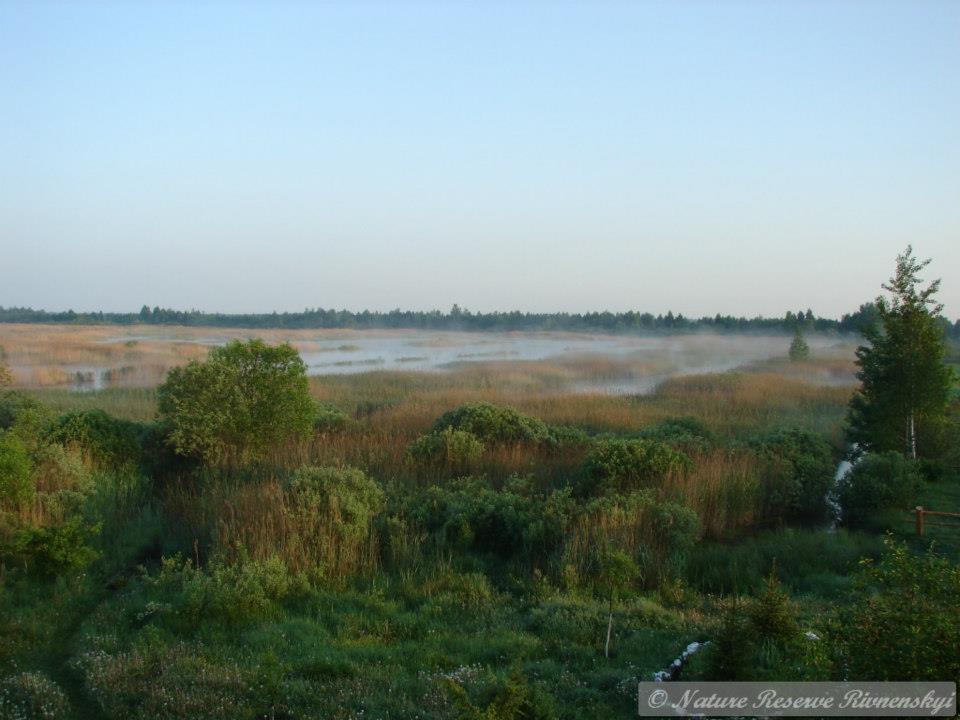 Rivne Natural ReservePHOTO FROM THE FACEBOOK PAGE OF THE RIVNE NATURAL RESERVE
Rivne Natural ReservePHOTO FROM THE FACEBOOK PAGE OF THE RIVNE NATURAL RESERVE
As Olha Denyshchyk, scientific project coordinator at the Michael Succow Foundation (Germany), explains, the Polissia marshes are connected to each other like communicating vessels.
This means that if you mine amber in one area, the neighbouring areas will also be affected. "To extract amber, it will be necessary to drain the marsh, build roads, remove the top layer of peat and soil 5 metres [deep - UP], and dig pits," says Denyshchyk. "Mining will go to a depth of approximately 12 metres. The process requires a large amount of water, so they will use water from the peatland.
This is the destruction of the entire ecosystem, which will lead to the drainage of water from Syra Pohonia, which is a Ramsar site [wetlands protected by the international Ramsar Convention - UP] and is located on the territory of the Rivne Reserve." While the Rivne Reserve was trying to come to an agreement with local communities (hromadas) on its expansion in some areas and waiting for the government's decision on others, on 15 March, the auction for Yelne-1 took place. The winner was SANDROP LLC, which offered UAH 7.28 million (roughly US£193,000) for the plot.
According to Olha Denyshchyk, there is no reason to believe that the law was broken at any point in this story. In other words, there is a genuine prospect that a unique area of nature, which is of international importance, will be destroyed legally.
A new word: warWilding
In the letter mentioned above, Professor Joosten draws direct attention to the defensive role of marshes: "The Polissia wetlands have always played a crucial role for the national security of Ukraine as natural protective barriers against a military threat..." On the one hand, this sounds like a literal truth: marshes are an almost insurmountable obstacle for heavy equipment.
There's a good reason why German troops bypassed the Polissia marshes during the Second World War. On the other hand, they were drained in later Soviet times for the peat and continue to be destroyed today, even when the military threat from the north is by no means abstract. The idea of using nature in warfare is as old as war itself.
However, it wasn't until last year that someone came up with a name for it. Jasper Humphreys of King's College London, who researches military conflicts and the environment, has proposed the term warWilding. The "W" in the middle of the word is capitalised to emphasise the importance of this "wilding".
This new term does not yet have an established definition; you won't even find it on Wikipedia. Jasper Humphreys came up with "warWilding" when he read about how the Ukrainian army reflooded the Irpin River to save Kyiv from the Russian invasion in spring 2022. The dying river, depleted by decades of its waters being pumped into the Kyiv Sea (the Kyiv Reservoir), was brought back to a more natural state, turning it into a defence weapon.
Even if there wasn't a war
The notion of warWilding suggests that it is worth thinking twice before draining marshes near Ukraine's borders, whether it is to dig defence moats, extract amber, or for agricultural purposes.
It is also worth considering how to improve the health of the marshes that currently appear to be struggling. That would be a good idea even if Ukraine's neighbours were entirely peaceful. After all, as discussed above, marshes are extremely effective when it comes to fighting climate change, preserving biodiversity, and, moreover, protecting cities and villages from floods and keeping natural fires at bay.
Late last year, Ukraine and the majority of countries worldwide signed the Kunming-Montreal Global Biodiversity Framework. This means, among other things, that Ukraine has committed to ensure that nearly a third of ecosystems destroyed by human activity return to their more natural state, restoring the steppe where sunflowers or corn are currently grown, planting forests where they had been cut down, and restoring marshes that are drying up as a result of human activity.
Restoring the marshes will be difficult, but worth it
A number of organisations have been working on several different projects to restore Ukraine's marshes in recent years. The Chorne Bahno (Black Bog) Marsh in Zakarpattia Oblast, part of the Zacharovanyi Krai (Enchanted Land) national park, is a rare success story.
Efforts were made to drain the marsh in the last century to clear ground for cattle pastures, causing the marsh to dry up and decline. Over the last few years, however, a number of organisations have been working together to improve the water flow, and the health of the Black Bog has significantly improved. Beavers returning to live in the marsh are proof of this new health.
Their return is particularly significant because they build dams that naturally retain water in the ecosystem.
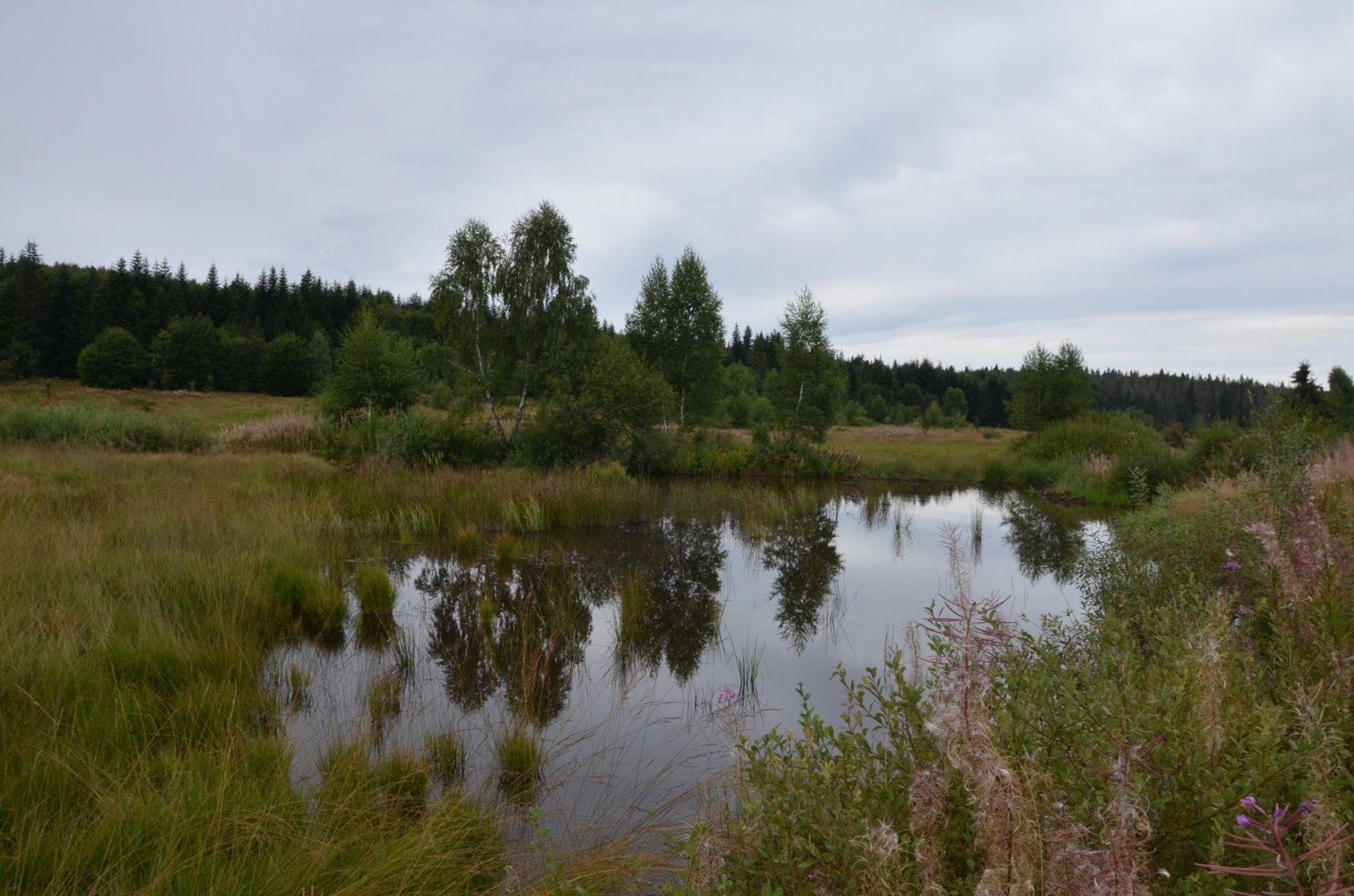 Black Bog is the deepest peat bog in the Carpathian mountains in Ukraine. The peat deposits there are up to seven metres deep. The marsh's ecosystem was damaged when people attempted to drain it in the last century for farming purposes.
Black Bog is the deepest peat bog in the Carpathian mountains in Ukraine. The peat deposits there are up to seven metres deep. The marsh's ecosystem was damaged when people attempted to drain it in the last century for farming purposes.
In the 21st century, however, experts have been able to improve its hydrological condition. As a result, beavers have returned to the marsh and are now playing their part in maintaining its health.Photo: Ekosfera on Facebook
"All aspects of [nature's] renewal are long-term processes. They require access to resources, funding, expertise and experience.
It is better to spend 10 hryvnias to protect nature than 100 or 1,000 to restore it," says Bohdan Prots, who has a PhD in biology and is the board director of the Danube-Carpathian Programme NGO and Department Head at the State Natural History Museum of the National Academy of Sciences of Ukraine. These issues have caused many marsh restoration projects in Ukraine to fail or be halted halfway through their implementation. Land users' attitudes and opinions constitute another difficulty and have to be taken into account.
If a local community does not want a real, wild marsh on their land, then no one can force them to have it. Olha Denyshchyk says that is the reason why the Succow Foundation and the Frankfurt Zoological Society are planning works to restore the health of marshes on the territory of the Rivne natural reserve. The works will take place as part of the Polesia - Wilderness Without Borders international nature protection project financed by Arcadia Fund's Endangered Landscapes Programme (ELP).
It is easier to establish mutual understanding with a nature reserve than with local communities. The reserve is much more concerned with the health of its wetlands than Ukrainian society more broadly. Dmytro Simonov
Translation: Myroslava Zavadska, Artem Yakymyshyn, Yelyzaveta Khodatska and Olya Loza
Editing: Ivan Zhezhera and Teresa Pearce